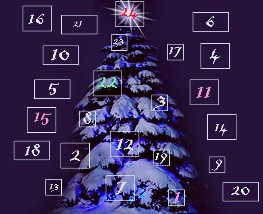Dearly Beloved

Dearly Beloved follows, in first person narrative, the story of Natalie; played excellently by Chloe Moretz. Natalie is a humble nine year old girl – who is more mature than most for her age – and we follow her experience of advent in the past year. The film starts off on November 30th, with Natalie frantically writing her Christmas list; beset on the idea of a collectable china horse. She narrates over the footage in a sincere, monotone voice. An eerie mood is set from the outset. This is not the conventional Christmas story.
Natalie’s mother, Diane, is played by Emma Thompson; a high-maintenance, business driven woman. Diane is never around on Christmas day, due to her work commitments. Her devoted husband, Rupert (played brilliantly by Tom Hanks) is the perfect man. Twenty or-so minutes into the film, we see a montage of the previous Christmas celebrations; of just Rupert and Natalie. We see Rupert cooking an entire meal by himself, wrapping all the presents for Natalie (and signing the labels from both himself and Diane) as well as a touching scene of a young Natalie in bed, with her father reading her a story.
Emotions are running high from the start of this film; we find out that Natalie is suffering from Leukaemia; but in a benign form. The film is actually a showcase of the decline of Natalie’s condition, and how the notion of Christmas keeps her going. The ranting scene between Diane and Rupert pulls on every heart string in its orchestra. We see, through the glass doors, Natalie; ears covered up and crying. In her lap, we see a gift she intends to give on Christmas day; a photo of her, Diane and Rupert – all smiling, with the words; ‘I couldn’t wish for a better family’ above.
Diane is hardly likeable, allowing the audience to draw parallels with Annette Bening’s performance in ‘American Beauty’. She finds the stress of an ill child and an overemotional husband too much to bear. One late-night meeting, early on in the film, we find her becoming embroiled in an affair. The pivotal scene, for me, comes in the confrontation when Rupert and Natalie catch Diane mid-affair, five days before Christmas. She even sleeps with the man on Christmas Eve. All the while, Rupert is at home – cleaning and comforting their child.
Director Darren Aronofsky uses an interesting motif of Natalie opening her advent calendar on the start of each new day. In addition, there is a distinctive ticking noise as she opens each door. The film ends on Christmas Day, in a slow motion montage. Rupert gets up from the couch, as Diane leaves out of the front door. A camera pans towards Natalie, asleep in her bed, Rupert takes more prescription pills before heading towards Natalie’s room. As Diane leaves in her lover’s car, Rupert’s world collapses. He finds a cold Natalie lying still in her bed, clutching that same picture as mentioned earlier (only now with a crack in the glass).
He rushes her to the hospital, mid-snow storm. As the doctors attempt to resuscitate her, Rupert is left helpless, and alone in the hallway in his bathrobe. To contrast, Diane is on a private jet, sipping champagne with her lover. Natalie’s hear monitor then falls flat, with a monotonous ‘beep’. As Rupert falls to his knees, Natalie’s voice begins to narrate. We see a mini montage of other families enjoying their Christmas holidays, and more shots of Diane and her lover, whilst Rupert cries over the body of his little girl. The film is one of the greatest pieces of cinematic poetry I have ever experienced. Who knew you could cry at a Christmas film?
By Greg Falla
To vote for Dearly Beloved click the “Facebook Like” button at the top of this page
Back to Write Christmas





Recent Comments